SOURCE: RAUNAK KUNDE / NEWS BEAT / IDRW.ORG

The Indian Air Force (IAF) and Hindustan Aeronautics Limited (HAL) are engaged in discussions for an additional order of 100 LCA-Tejas Mk1A fighter jets. This potential surge in orders comes as a resounding endorsement of the LCA-Tejas program and holds the potential to rejuvenate its image in the global export market.
The decision to explore an additional order of 100 LCA-Tejas Mk1A jets signifies a significant milestone for the program, as it comes in the wake of the initial order for 83 jets that were placed in 2021. This augmented order not only underscores the IAF’s confidence in the capabilities of the LCA-Tejas but also paves the way for the aircraft’s enhanced recognition and acceptance on the international stage.
Continue readingSOURCE: RAUNAK KUNDE / NEWS BEAT / IDRW.ORG
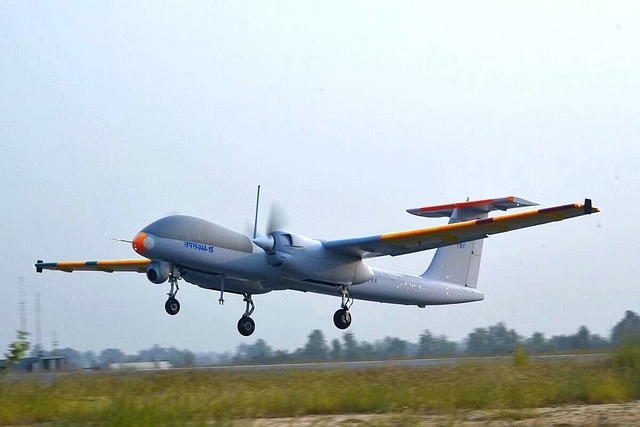
India’s pursuit of indigenous military capabilities is driving the development of its Medium-Altitude Long-Endurance (MALE) Class Unmanned Aerial Vehicles (UAVs). As the nation gears up for user trials of the Tapas UAV with the Indian Armed Forces, a new contender, the Archer-NG (Next-Generation), is emerging on the horizon, posing both challenges and prospects for India’s UAV capabilities.
The Tapas UAV, known as the BH-201, has garnered attention for its capabilities, but it is not without its share of challenges. The UAV aims to achieve an operating altitude of 30,000 feet and an endurance of more than 24 hours. However, current flight tests have indicated that the UAV falls slightly short of these targets. Achieving these operational requirements remains a priority, and the Defense Research and Development Organization (DRDO) is working on enhancing the engine’s capacity to meet these goals.
One of the noteworthy features of the Tapas UAV is its T-shaped tail assembly and shoulder-mounted wings design. This design is intended to offer inherent stability and improved control during flight, especially in pitch. However, weight optimization remains a challenge for the Tapas program. Despite ongoing efforts, the UAV’s weight has not been brought down to the desired levels, and this factor could impact its operational efficiency.
Parallel to the Tapas program, the development of Archer-NG has been pursued. The Archer-NG UAV features a Single Engine Twin Boom (SETB) configuration, which has garnered attention for its potential benefits. The twin-boom design enhances structural support, minimizes flexing, and provides efficient mounting of tail assemblies. These features contribute to better flight stability and control.
Archer-NG’s focus extends beyond intelligence and surveillance capabilities; it also incorporates the potential for armed strikes.
The competition between Tapas and Archer-NG is of strategic importance as India seeks to bolster its indigenous UAV capabilities. The Armed Forces’ desire to procure around 97 MALE Class UAVs underscores the significance of this development. While Tapas offers promise, Archer-NG’s more advanced design and stability could provide a compelling alternative.
Time is of the essence for both programs. To secure its position, Archer-NG must swiftly demonstrate its operational readiness and meet the specified requirements. Tapas, on the other hand, needs to overcome its weight challenges and achieve the intended operational capabilities quickly to maintain its competitive edge.
NOTE : Article cannot be reproduced without written permission of idrw.org in any form even for YouTube Videos to avoid Copy right strikes
SOURCE: RAUNAK KUNDE / NEWS BEAT / IDRW.ORG

The realm of international defence collaboration is witnessing a new dawn as the United States expresses keen interest in partnering with India for the development of future weapons programs. This burgeoning partnership, poised to enhance the bilateral relationship between the two countries, reflects a growing synergy in their strategic and defence objectives.
The most recent manifestation of this collaborative endeavour is the co-development of Launched Unmanned Aerial Vehicles (UAVs). These UAVs, designed for surveillance missions and capable of air recovery after fulfilling their mission objectives, represent a successful initial step towards bolstering joint defence initiatives.
Continue readingSOURCE: IDRW.ORG TEAM
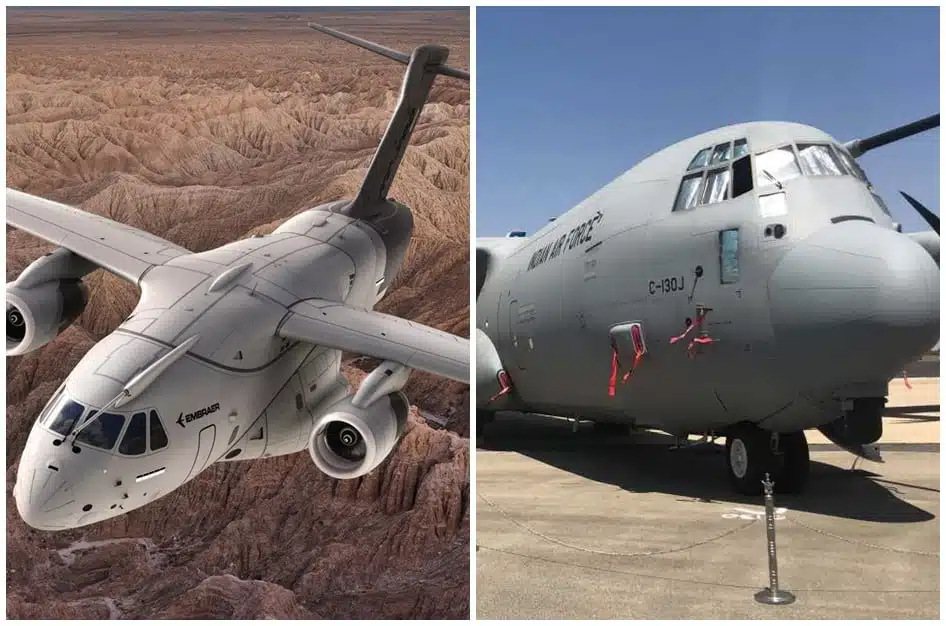
The Indian Air Force (IAF) is currently engaged in a series of feasibility studies aimed at determining the ideal numbers for its Medium Transport Aircraft (MTA) requirement. This initiative comes as part of the IAF’s broader plan to replace its aging fleet of An-32 Transporters, which were procured in the early 1980s.
The IAF’s Request for Information (RFI) for the MTA tender had initially indicated the potential requirement for 40, 60, or 80 units. However, insiders familiar with the matter have indicated that the final unit requirement will likely be fewer than 50. This adjustment in numbers is likely influenced by the IAF’s overarching modernization strategy and fleet management considerations.
Continue readingSOURCE: IDRW.ORG TEAM
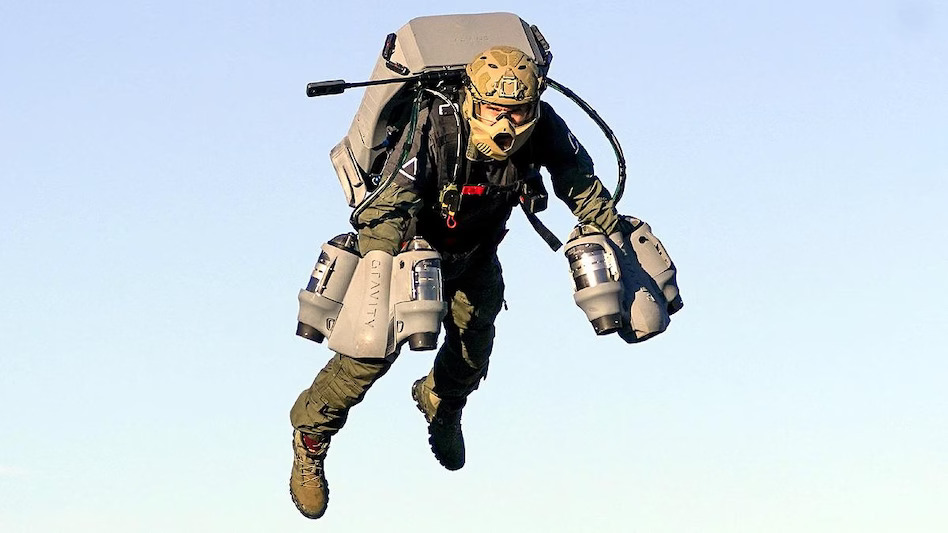
The Indian Army’s ambitions of donning futuristic jet pack suits, allowing soldiers to soar short distances and heights, have been momentarily grounded as the procurement plans for 48 of these advanced gear have been put on hold. This surprising development comes after the Army issued a Request for Information (RFI) earlier this year, seeking cutting-edge jet pack suits to empower soldiers during special situations such as natural calamities, counter-insurgency operations, and high altitudes.
The concept of jet pack suits has long been a staple of science fiction, capturing imaginations with the promise of human flight. These wearable devices, resembling backpacks, are designed to carry individuals weighing up to 80 kg and can achieve speeds of up to 50 km per hour. The suits, if successfully deployed, could have significant implications for disaster response, quick reconnaissance, and counter-insurgency missions.
Continue readingSOURCE: RAUNAK KUNDE / NEWS BEAT / IDRW.ORG

The Indian Air Force (IAF) is set to initiate a transformative process by procuring six pre-owned aircraft that will be subsequently converted into aerial tankers. The upcoming tender will be floated within the next six months as per media reports.
HAL’s partnership with IAI, an Israeli company with expertise in aviation technology, will play a pivotal role in the certification and conversion process. Once acquired, the pre-owned aircraft will undergo comprehensive upgrades, receiving new avionics and engines to extend their operational lifespan by 25 to 30 years. With the addition of advanced avionics and engines aircraft will be equipped with military-grade state-of-the-art technology, ensuring the continued effectiveness of its aerial fleet.
Continue readingSOURCE: RAUNAK KUNDE / NEWS BEAT / IDRW.ORG

Hindustan Aeronautics Limited (HAL) has moved closer to choosing the Russian NPP Zvezda K-36 ejection seats for integration into the Tejas Mk1A fighter jets earmarked for the Argentine Air Force if ordered are placed. The K-36DM ejection seats, manufactured by NPP Zvezda, are renowned for their advanced zero-zero capabilities, ensuring safe ejections even at zero speed and altitude.
These seats are currently utilized in the Indian Air Force’s Su-30 MKI fleet, demonstrating their reliability and efficiency. However, some recalibration of the ejection seat firing sequence may be required to seamlessly integrate them into the Tejas Mk1A aircraft.
Continue readingSOURCE: RAUNAK KUNDE / NEWS BEAT / IDRW.ORG
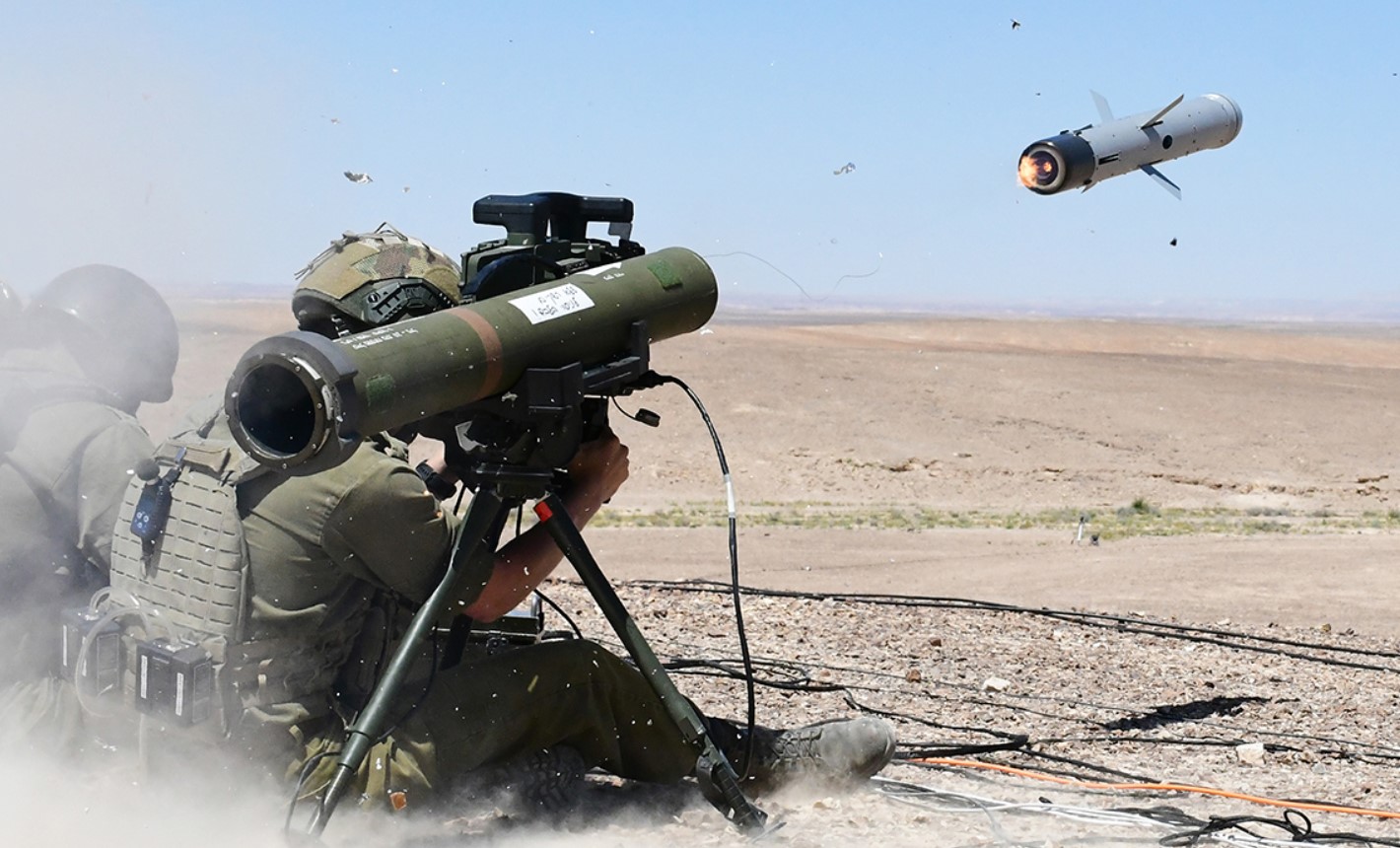
In a significant move to enhance its anti-tank capabilities, the Indian Army has recently placed orders for cutting-edge Israeli anti-tank guided missiles (ATGMs). These missiles, known for their extended range and enhanced armour-penetration capabilities, are set to bolster the Army’s firepower, providing a potent deterrence against armoured threats on the battlefield.
The Indian Army had previously inducted Israeli Spike LR-2 launchers and missiles, which boasted a formidable ground strike range of 5.5 kilometres. The latest order for these advanced ATGMs marks a follow-up to this procurement. The acquisition has been facilitated through Kalyani Rafael Advanced Systems Pvt Ltd (KRAS), a joint venture (JV) company between Kalyani Strategic Systems Ltd (KSSL) a subsidiary of Bharat Forge Ltd and Israel’s Rafael Advanced Defense Systems (Rafael) Ltd.
This collaboration ensures that 90% of the missile components are locally sourced, reflecting India’s commitment to the “Make in India” initiative.
SOURCE: IDRW.ORG TEAM

In a significant leap towards technological advancement, the Bengaluru-based Aeronautical Development Establishment (ADE), a premier research laboratory under the Defence Research and Development Organisation (DRDO), has set its sights on the development of cutting-edge unmanned aerial combat vehicles (UCAVs).
The ambitious UCAV project aims to give birth to unmanned aerial vehicles with an all-up weight (AUW) of approximately 12.5 to 13 tons. To put this into perspective, this weight range aligns closely with the AUW of the LCA-Tejas Mk1A fighter jets – a testament to the substantial scale of this venture. M.Z Siddique, recently appointed as the Director General of DRDO Aeronautical Cluster (DG-Aero), confirmed this groundbreaking development.
Continue readingSOURCE: IDRW.ORG TEAM
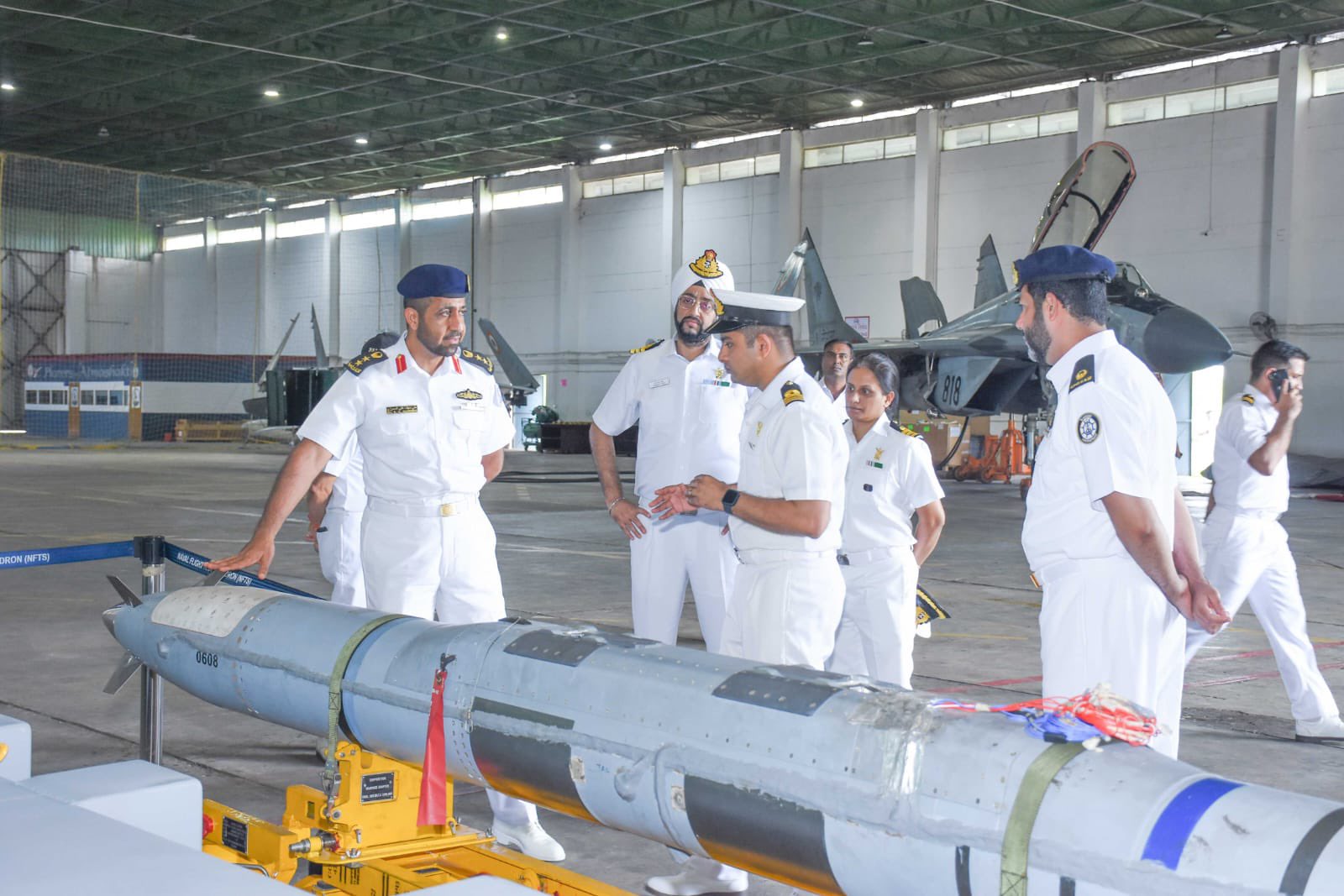
The Indian Navy continues to demonstrate its technological prowess and strategic capabilities, this time by showcasing the Israeli Rampage Long Range Air-to-Ground Precision Strike Weapon to a UAE Navy Subject Matter Expert delegation. The visit took place on August 30, 2023, aboard the INSHansa in Goa. This marked the first time that the weapon was displayed, underscoring the Navy’s commitment to innovation and cutting-edge defense solutions.
The Rampage Long Range Air-to-Ground Precision Strike Weapon is an impressive addition to the Indian Navy’s arsenal, notably equipped on the Mig-29K aircraft. This weapon, characterized by its long-range capabilities and precision targeting, is designed to effectively neutralize high-value, heavily fortified targets. Such targets include communication and command centers, air force bases, maintenance facilities, and critical infrastructure.
Continue readingSOURCE: RAUNAK KUNDE / NEWS BEAT / IDRW.ORG

As part of its ongoing efforts to enhance defence cooperation with other nations, India has extended a significant offer to Brazil by proposing its indigenously developed 155mm/52cal Mounted Gun System (MGS). The offer was made to General Tomas Miguel Mine Ribeiro Paiva, the Commander of the Brazilian Army, who is currently on a state visit to India.
Brazil initiated an acquisition program last year to procure 36-wheeled self-propelled howitzers, signalling its intent to modernize and strengthen its artillery capabilities. The primary objective of this program is to acquire a new mobile artillery system that offers enhanced deployability and can effectively engage targets at a maximum range of 40 km. The Brazilian Army’s plans involve outfitting three companies of the Artillery Division and the Mechanized Brigade with these advanced systems.
Continue readingSOURCE: RAUNAK KUNDE / NEWS BEAT / IDRW.ORG
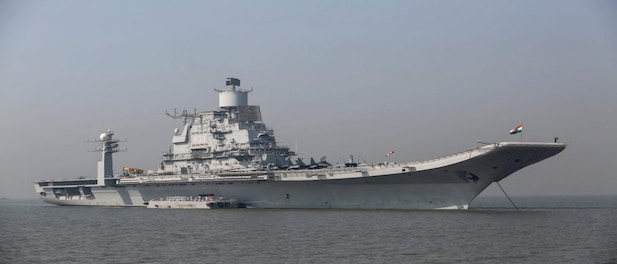
The Indian Navy is gearing up to enhance its security capabilities by investing Rs 490 crore in the procurement of counter-drone systems. These cutting-edge systems will be deployed not only on warships like the INS Vikramaditya and Vikrant but also at naval bases ashore. This strategic move is aimed at countering threats posed by enemy drones, a concern that has prompted both the Army and Air Force to acquire similar anti-drone systems.
The Request for Information (RFI) document released by the Ministry of Defence outlines the intention to acquire Counter Drone Systems (Soft Kill) for deployment across Indian Naval warships and establishments ashore. With this step, the Navy acknowledges the rising significance of countering enemy drones not only at sea but also at its various bases situated across the country.
Continue readingSOURCE: RAUNAK KUNDE / NEWS BEAT / IDRW.ORG
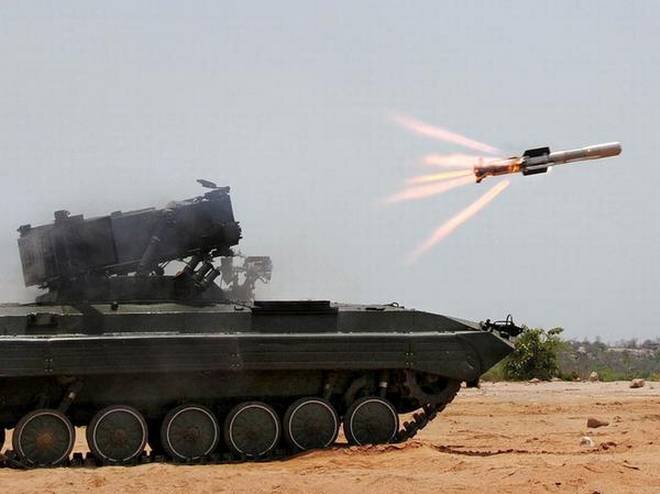
India’s Defence Research and Development Organisation (DRDO) has achieved a significant milestone as its Nag anti-tank guided missile (ATGM) completed all flight and user trials required for induction into the Indian Army.
Developed by Bharat Dynamics Limited (BDL) and the DRDO’s Defence Research and Development Laboratory (DRDL), the Nag ATGM was conceived in the 1980s to fulfil the Indian Army’s requirement for a versatile, vehicle- and air-launched ATGM with a formidable maximum range of 4 km.
Continue readingSOURCE: IDRW.ORG TEAM
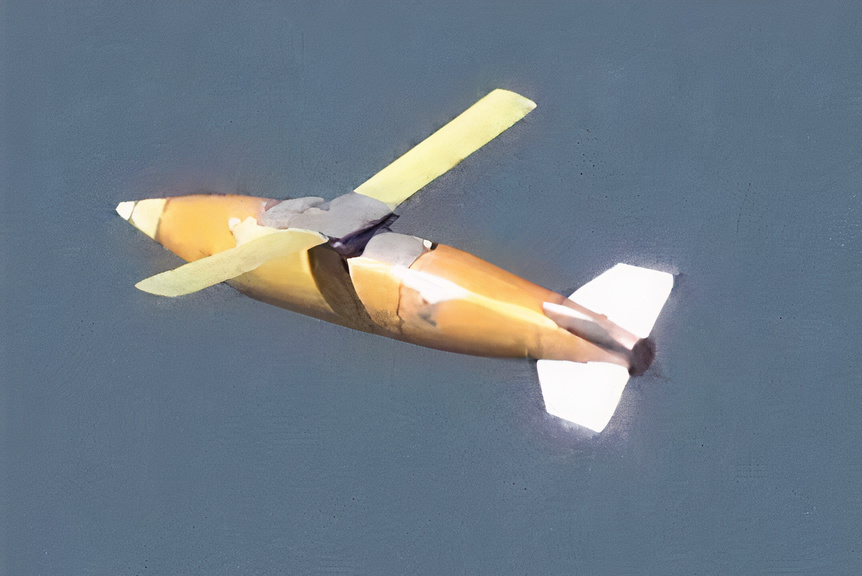
In a move that underlines its commitment to enhancing its aerial firepower, the Indian Air Force (IAF) has recently inked two contracts with an Indian vendor for the supply of air-delivered munitions. While specific details about the order remain confidential, speculation points towards the procurement of long-range glide bombs designed by the Defence Research and Development Organization (DRDO). These smart bombs mark a significant advancement in precision targeting and offer the IAF a potent edge in modern warfare.
The DRDO has developed two variants of the Long Range Glide Bomb (LRGB) – Gaurav and Gautham. Both of these precision-guided weapons have been engineered to self-navigate, glide over distances, and effectively neutralize enemy targets with a high degree of accuracy. Designed explicitly for the Indian Air Force, these smart bombs address the challenge of engaging targets that are beyond the reach of conventional munitions.
Continue readingSOURCE: IDRW.ORG TEAM
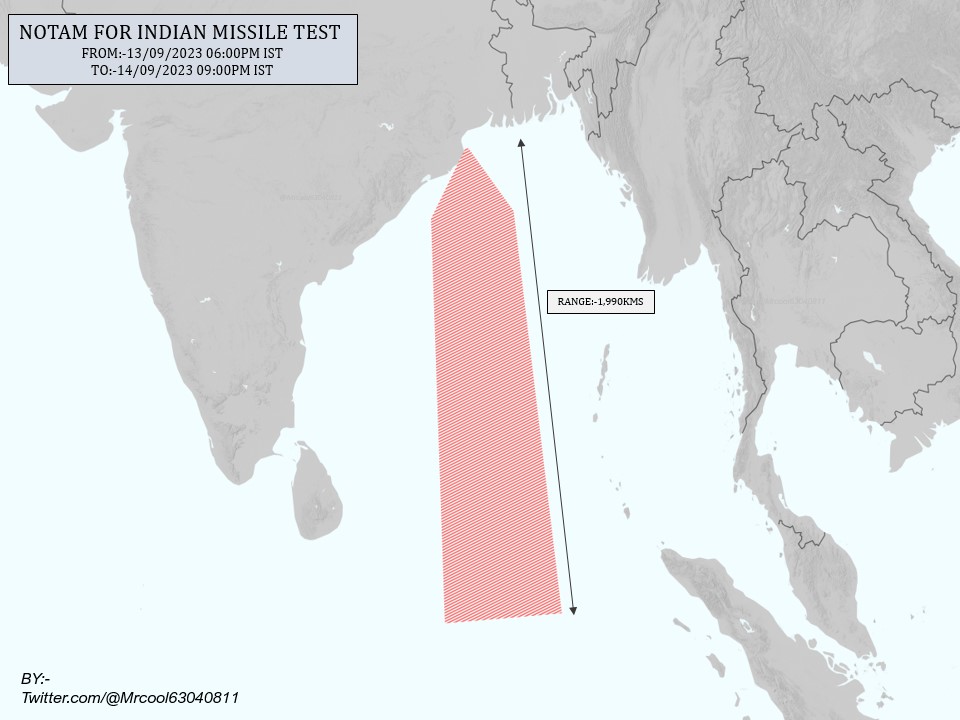
India has issued a fresh Notice to Airmen (NOTAM) for a designated range from September 13th to September 14th, 2023. While the NOTAM itself does not explicitly specify the type of missile to be tested, experts suggest that the range mentioned, spanning 1990 kilometers, points towards the possibility of an Agni-1P missile test.
The Agni-1P, a medium-range ground-based ballistic missile, Capable of carrying a nuclear warhead, the missile has demonstrated its prowess through a series of successful tests.
Continue reading